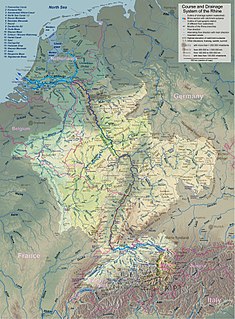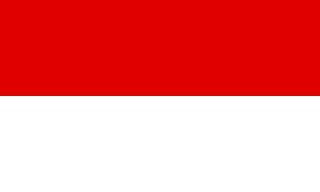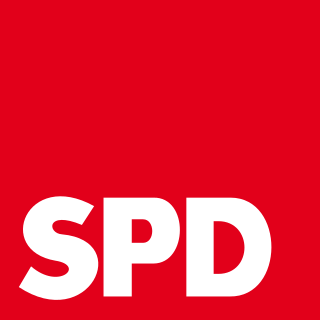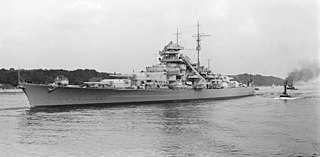
Berlin is the capital and largest city of Germany by both area and population. Its 3,748,148 (2018) inhabitants make it the second most populous city proper of the European Union after London. The city is one of Germany's 16 federal states. It is surrounded by the state of Brandenburg, and contiguous with Potsdam, Brandenburg's capital. The two cities are at the center of the Berlin-Brandenburg capital region, which is, with about six million inhabitants and an area of more than 30,000 km², Germany's third-largest metropolitan region after the Rhine-Ruhr and Rhine-Main regions.

Cologne is the largest city of Germany's most populous federal state of North Rhine-Westphalia and the fourth most populous city in Germany after Berlin, Hamburg, and Munich. With slightly over a million inhabitants within its city boundaries, Cologne is the largest city on the Rhine and also the most populous city both of the Rhine-Ruhr Metropolitan Region, which is Germany's largest and one of Europe's major metropolitan areas, and of the Rhineland. Centered on the left bank of the Rhine, Cologne is about 45 kilometres (28 mi) southeast of North Rhine-Westphalia's capital of Düsseldorf and 25 kilometres (16 mi) northwest of Bonn. It is the largest city in the Central Franconian and Ripuarian dialect areas.

Frankfurt is a metropolis and the largest city of the German federal state of Hesse, and its 746,878 (2017) inhabitants make it the fifth-largest city in Germany, after Berlin, Hamburg, Munich, and Cologne. On the River Main, it forms a continuous conurbation with the neighbouring city of Offenbach am Main, and its urban area has a population of 2.3 million. The city is at the centre of the larger Rhine-Main Metropolitan Region, which has a population of 5.5 million and is Germany's second-largest metropolitan region after the Rhine-Ruhr Region. Since the enlargement of the European Union in 2013, the geographic centre of the EU is about 40 km (25 mi) to the east of Frankfurt's central business district. Like France and Franconia, the city is named after the Franks. Frankfurt is the largest city in the Rhine Franconian dialect area.

The Main is a river in Germany. With a length of 525 kilometres (326 mi), it is the longest right tributary of the Rhine. It is also the longest river lying entirely in Germany. The largest cities along the Main are Frankfurt am Main and Würzburg.

Mainz is the capital and largest city of Rhineland-Palatinate, Germany. The city is located on the Rhine river at its confluence with the Main river, opposite Wiesbaden on the border with Hesse. Mainz is an independent city with a population of 206,628 (2015) and forms part of the Frankfurt Rhine-Main Metropolitan Region.

Nuremberg is the second-largest city of the German federal state of Bavaria after its capital Munich, and its 511,628 (2016) inhabitants make it the 14th largest city in Germany. On the Pegnitz River and the Rhine–Main–Danube Canal, it lies in the Bavarian administrative region of Middle Franconia, and is the largest city and the unofficial capital of Franconia. Nuremberg forms a continuous conurbation with the neighbouring cities of Fürth, Erlangen and Schwabach with a total population of 787,976 (2016), while the larger Nuremberg Metropolitan Region has approximately 3.5 million inhabitants. The city lies about 170 kilometres (110 mi) north of Munich. It is the largest city in the East Franconian dialect area.

The Rhine is one of the major European rivers, which has its sources in Switzerland and flows in a mostly northerly direction through Germany and the Netherlands, emptying into the North Sea. The river begins in the Swiss canton of Graubünden in the southeastern Swiss Alps, forms part of the Swiss-Liechtenstein, Swiss-Austrian, Swiss-German and then the Franco-German border, then flows through the German Rhineland and the Netherlands and eventually empties into the North Sea.

The Schutzstaffel was a major paramilitary organization under Adolf Hitler and the Nazi Party (NSDAP) in Nazi Germany, and later throughout German-occupied Europe during World War II. It began with a small guard unit known as the Saal-Schutz made up of NSDAP volunteers to provide security for party meetings in Munich. In 1925, Heinrich Himmler joined the unit, which had by then been reformed and given its final name. Under his direction (1929–45) it grew from a small paramilitary formation during the Weimar Republic to one of the most powerful organizations in Nazi Germany. From 1929 until the regime's collapse in 1945, the SS was the foremost agency of security, surveillance, and terror within Germany and German-occupied Europe.

Hesse or Hessia, officially the State of Hesse, is a federal state (Land) of the Federal Republic of Germany, with just over six million inhabitants. Its state capital is Wiesbaden and the largest city is Frankfurt am Main.

The Social Democratic Party of Germany is a social-democratic political party in Germany.

Bismarck was the first of two Bismarck-class battleships built for Nazi Germany's Kriegsmarine. Named after Chancellor Otto von Bismarck, the ship was laid down at the Blohm & Voss shipyard in Hamburg in July 1936 and launched in February 1939. Work was completed in August 1940, when she was commissioned into the German fleet. Bismarck and her sister ship Tirpitz were the largest battleships ever built by Germany, and two of the largest built by any European power.

The Reichstag is a historic edifice in Berlin, Germany, constructed to house the Imperial Diet of the German Empire. It was opened in 1894 and housed the Diet until 1933, when it was severely damaged after being set on fire. After World War II, the building fell into disuse; the parliament of the German Democratic Republic met in the Palast der Republik in East Berlin, while the parliament of the Federal Republic of Germany met in the Bundeshaus in Bonn.

Hanau is a large town in the Main-Kinzig-Kreis, in Hesse, Germany. It is located 25 km east of Frankfurt am Main and is part of the Frankfurt Rhine-Main Metropolitan Region. Its station is a major railway junction and it has a port on the river Main, making it an important transport centre. The town is known for being the birthplace of Jakob and Wilhelm Grimm and Franciscus Sylvius. Since the 16th century it was a centre of precious metal working with many goldsmiths. It is home to Heraeus, one of the largest family-owned companies in Germany.

The Leopard 2 is a main battle tank developed by Krauss-Maffei in the 1970s for the West German Army. The tank first entered service in 1979 and succeeded the earlier Leopard 1 as the main battle tank of the German Army. It is armed with a 120 mm smoothbore cannon, and is powered by a V-12 twin-turbo diesel engine. Various versions have served in the armed forces of Germany and 12 other European countries, as well as several non-European nations, including Canada, Chile, Indonesia, Singapore, and Turkey. The Leopard 2 was used in Kosovo with the German Army, and has seen action in Afghanistan with the Dutch, Danish and Canadian contributions to the International Security Assistance Force, as well as seeing action in Syria with the Turkish Armed Forces against ISIS and the YPG.

The German National Library is the central archival library and national bibliographic centre for the Federal Republic of Germany. Its task is to collect, permanently archive, comprehensively document and record bibliographically all German and German-language publications since 1913, foreign publications about Germany, translations of German works, and the works of German-speaking emigrants published abroad between 1933 and 1945, and to make them available to the public. The German National Library maintains co-operative external relations on a national and international level. For example, it is the leading partner in developing and maintaining bibliographic rules and standards in Germany and plays a significant role in the development of international library standards. The cooperation with publishers has been regulated by law since 1935 for the Deutsche Bücherei Leipzig and since 1969 for the Deutsche Bibliothek Frankfurt.

Frankfurt (Main) Hauptbahnhof, often abbreviated as Frankfurt (Main) Hbf and sometimes translated as Frankfurt central station, is the busiest railway station in Frankfurt, Germany. The affix "Main" comes from the city's full name, Frankfurt am Main. Because of its location in the middle of Germany and usage as a transport hub for long and short distance travelling, Deutsche Bahn refers to it as the most important station in Germany.

The Grand Duchy of Hesse and by Rhine was a grand duchy in western Germany that existed from 1806 to the end of the German Empire in 1918. The grand duchy originally formed on the basis of the Landgraviate of Hesse-Darmstadt in 1806 as the Grand Duchy of Hesse. After the end of the Napoleonic Wars in 1815, it changed its name in 1816 to distinguish itself from the Electorate of Hesse, which had formed from neighboring Hesse-Kassel. Colloquially, the grand duchy continued to be known by its former name of Hesse-Darmstadt. It joined the German Empire in 1871 and became a republic after German defeat in World War I in 1918.

The Rhine-Main Metropolitan Region, often simply referred to as Frankfurt Rhine-Main, Frankfurt Rhine-Main area or Rhine-Main area is the second largest metropolitan region in Germany, with a total population exceeding 5.8 million. The metropolitan region is located in the central western part of Germany, and stretches over parts of three federal states: Hesse, Rhineland-Palatinate and Bavaria, as well as the cities of Frankfurt am Main, Wiesbaden, Offenbach, Mainz, Darmstadt and Aschaffenburg.

The Integrated Authority File or GND is an international authority file for the organisation of personal names, subject headings and corporate bodies from catalogues. It is used mainly for documentation in libraries and increasingly also by archives and museums. The GND is managed by the German National Library in cooperation with various regional library networks in German-speaking Europe and other partners. The GND falls under the Creative Commons Zero (CC0) licence.

Zürich or Zurich is the largest city in Switzerland and the capital of the canton of Zürich. It is located in north-central Switzerland at the northwestern tip of Lake Zürich. The municipality has approximately 409,000 inhabitants, the urban agglomeration 1.315 million and the Zürich metropolitan area 1.83 million. Zürich is a hub for railways, roads, and air traffic. Both Zurich Airport and railway station are the largest and busiest in the country.

























